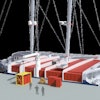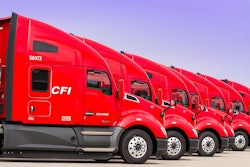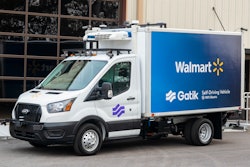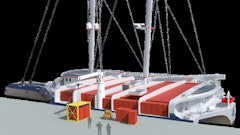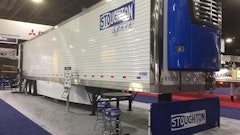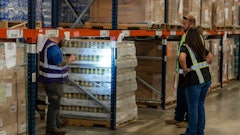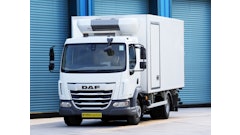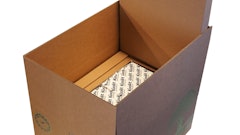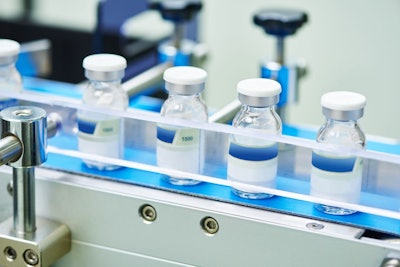
Ultra-low temperature (ULT) freezers are an absolute necessity for any organization handling temperature-sensitive specimens, therapies or mRNA vaccines. This essential cold storage equipment can effectively and safely preserve the cold chain for pharmaceutical, biotechnology, life sciences and healthcare industries. With the recent ultracold temperature requirements of mRNA-based COVID-19 vaccines, ULT cold storage has become a key focus for vaccine storage and distribution. Here are some best practices for understanding ULT freezer technology and its important connection to the logistics of last-mile delivery of temperature-sensitive medicines and vaccines.
What is ULT cold storage?
ULT cold storage refers to a thermally maintained storage environment at or below -20°C. In many instances, the device used to achieve these temperatures are freezers, and within the life science research industry, ULT freezers are commonplace because they preserve valuable biological samples for long periods of time. ULT freezer temperatures typically range between -40°C to -86°C (-40°F to -122.8°F), while some suppliers can reach up to -20°C (-4°F). Ultra-low temperatures are critical to protect biological materials such as cells and tissues, and biomolecules like proteins, oligonucleotides and mRNA from denaturation and heat damage. Like regular household refrigeration units, ULT freezers can come in upright, chest, undercounter/benchtop and even portable models. The compressor-based ULT freezers achieve ultracold temperatures with two compressors and cooling loops in a cascading arrangement continuously cycling between on and off states. These systems are often noisy, produce a lot of heat and may potentially not last long enough to make this a cost-effective purchase. There is an alternative and reliable ULT freezer system that employs simple, free-piston Stirling engine technology to reciprocate a piston and displacer in an energy feedback loop, producing cold air that moves down a gravity-driven thermosiphon.
What are the pros of ULT freezers compared to alternatives, such as dry ice?
· Precise and reliable temperature control in a wider temperature range, with available integration of secondary, remote temperature monitoring
· Only personal protective equipment (PPE) needed are commonly available gloves
· No significant personnel risks or ventilation requirements
· Easy and organized access to samples
· Maximized storage capacity
· Newer technologies enable the use of compact and portable ULT models that can be deployed quickly with low shipping costs
From a logistics standpoint, ULT freezers are the best way to preserve the cold chain long-term. Dry ice is not a permanent solution or exact science and requires regular refill and monitoring to maintain the temperature setpoint.
What are the cons of ULT freezers?
· Availability of ULT freezers may be limited. Many suppliers are now reporting backorders due to high demand for COVID-19 vaccine storage.
· Upfront and hidden costs (energy use, HVAC requirements, maintenance, monitoring systems) can be a barrier for smaller organizations. Upright ULT freezers can range anywhere from $6,000 to $25,000.
· While there are compact and portable ULT freezers available today, some models are still too bulky and cumbersome for smaller clinics and pharmacies with significant space and infrastructure limitations.
· A ULT freezer’s power requirements can be challenging to navigate. What is the model’s voltage range? Are voltage boosters needed? Is it brownout tolerant?
Legacy ULT models vs. new, compact and infrastructure-ready ULT technology
Advancements in ULT technology has improved significantly over the last 10-plus years. There are many benefits to upgrading and replacing older ULT freezers with new high-efficiency models.
· Energy efficiency upgrades have led to reductions in energy use, energy costs and HVAC costs
· High performance insulation in freezer cabinets now provides better temperature uniformity
· Environmentally sustainable refrigerants reduce environmental impacts
· Modern alarm and data logging capabilities
· Noise reduction
· Easier and less frequent maintenance
Essential considerations when purchasing a new ULT freezer for COVID vaccine planning and logistics for last-mile delivery
· Choose ULT freezers with the widest temperature setpoint range to optimize ultracold storage for all mRNA vaccine candidates.
· Look for infrastructure-ready models that can minimize energy consumption, have low heat output and HVAC loads and models with a wide voltage range and universal power built in.
· Opt for freezers with the smallest freezer footprint, maximum storage capacity and portability which can provide flexibility within the clinical setting.
· Select ULT models with integrated or cloud-based temperature monitoring services.
Other key considerations
While most think the initial purchase price of a ULT freezer is the most important factor, there are other questions that should be asked when buying a new unit.
· Can custom high-density storage racks and boxes be utilized to maximize the interior cabinet space?
· When electrical supply is disrupted, is there a backup cooling system in place or can one be added to the freezer? Options include liquid nitrogen or carbon dioxide.
· Consider the big picture when purchasing a new ULT freezer. The initial purchase price may be lower, but what are the floor space costs, HVAC cost impacts, energy consumption costs and maintenance costs? You might be surprised to find that the cheapest purchase price might not be the cheapest freezer in the long run.
How to maintain COVID-19 vaccine efficacy and the cold chain during last-mile delivery and patient point of use
One of the most significant challenges of the Coronavirus disease (COVID-19) vaccine administration is maintaining safe and effective doses, on-site, over extended periods of time in local health agencies, clinics and pharmacies where vaccines are typically administered. These facilities are rarely equipped with ULT freezers. Large, upright ULT freezers are often too expense, bulky and noisy for this type of clinical setting. Dry ice will not provide the long-term temperature stability needed to safely store and control vaccines at the ultracold temperature requirements close to the patient. Opting for undercounter, benchtop or portable ULT freezers that were designed for use in small, rural or remote locations is ideal. These smaller units provide the same performance and reliability of a full-size, upright ULT freezer, yet can be easily moved throughout clinical sites, with alternative power sources. Choosing suppliers with flexible voltages can avoid the need for building rewiring or HVAC modifications. These unique, compact models can provide point of use clinics the peace of mind with precise temperature setpoint control and the ability to monitor and log vaccine temperatures for an audit trail. Utilizing small ULT freezers will also help to avoid last mile cold storage bottlenecks and get patients vaccinated faster.
The future of pharmaceutical and precision medicine logistics looks bright
With COVID-19 vaccine storage bringing ULT freezers to the spotlight, this ultracold equipment will become integral in all phases of the coming mRNA technology revolution. Advancements in cell and gene therapy, regenerative medicine, vaccines and immunotherapies will most likely require ULT freezers to safely preserve priceless biological materials. With a limited life span, availability and temperature control, dry ice will not be a reliable source for preserving and protecting therapies over long periods of time. COVID-19 is paving the way for pharmaceutical and vaccine manufacturers, third-party logistics providers and clinical point-of-care facilities to put into place and scale up their cold storage capacity for the future of medicine.



